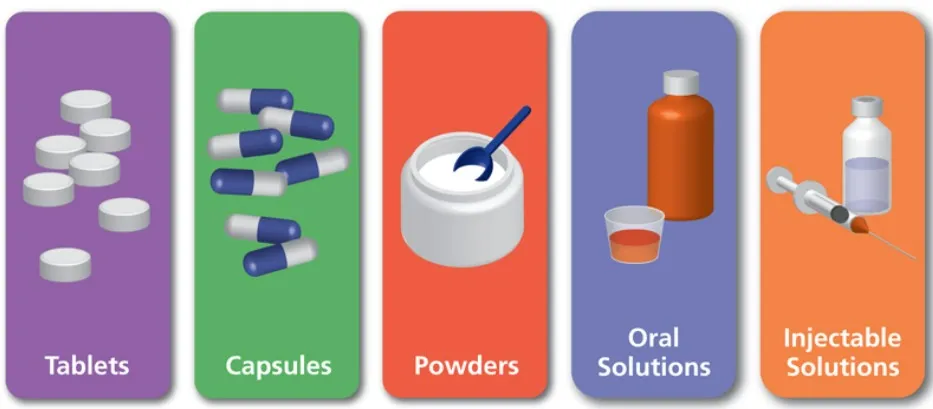The Shape of Pharmaceutical Dosage Forms

The Shape of Pharmaceutical Dosage Forms
Definition:
In pharmaceuticals, dosage form shape refers to the physical appearance and geometry of the medicine, which can influence patient compliance, swallowing ease, identification, and manufacturing efficiency.
1. Solid Dosage Forms
Tablets
-
Common Shapes:
-
Round – most common, easy to manufacture.
-
Oval / Caplet – easier to swallow than round tablets.
-
Oblong – common for higher-dose tablets.
-
Square, Triangular, Hexagonal – mainly for branding and identification.
-
-
Special Shapes:
-
Biconvex – prevents chipping and aids coating.
-
Flat-faced – used for certain chewable or dispersible tablets.
-
Capsules
-
Hard Gelatin Capsules – elongated, cylindrical shape.
-
Soft Gelatin Capsules – spherical or oval.
2. Semi-Solid Dosage Forms
-
Ointments, Creams, Gels – packaged in tubes or jars; shape depends on container.
-
Applied externally, so product shape is usually the container’s shape rather than the formulation itself.
3. Liquid Dosage Forms
-
Solutions, Suspensions, Syrups – no fixed “shape”; determined by container (bottle, vial, ampoule).
-
For injectables: cylindrical ampoules or vials.
4. Novel / Special Dosage Forms
-
Lozenges & Troches – disc or oval.
-
Suppositories – bullet or torpedo shape for rectal use; oval for vaginal use.
-
Transdermal Patches – rectangular, square, or circular.
Why Shape Matters in Pharmaceuticals
-
Patient Compliance – easier swallowing and better acceptance.
-
Identification & Branding – shape + color = unique recognition (important for preventing medication errors).
-
Manufacturing Efficiency – some shapes are easier to coat, print, or package.
-
Mechanical Strength – certain shapes reduce breakage during handling.

